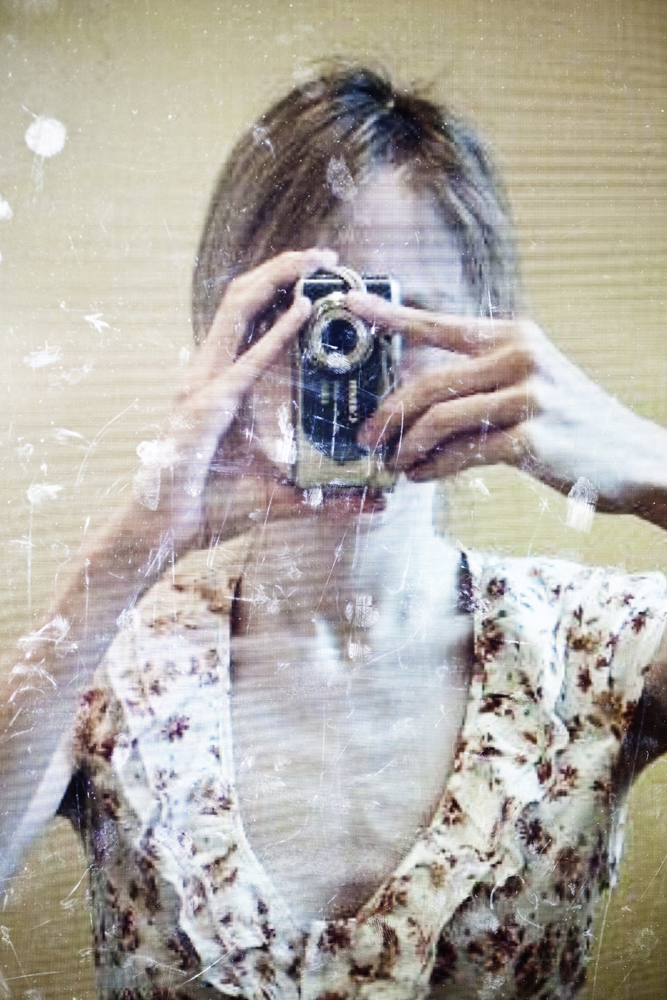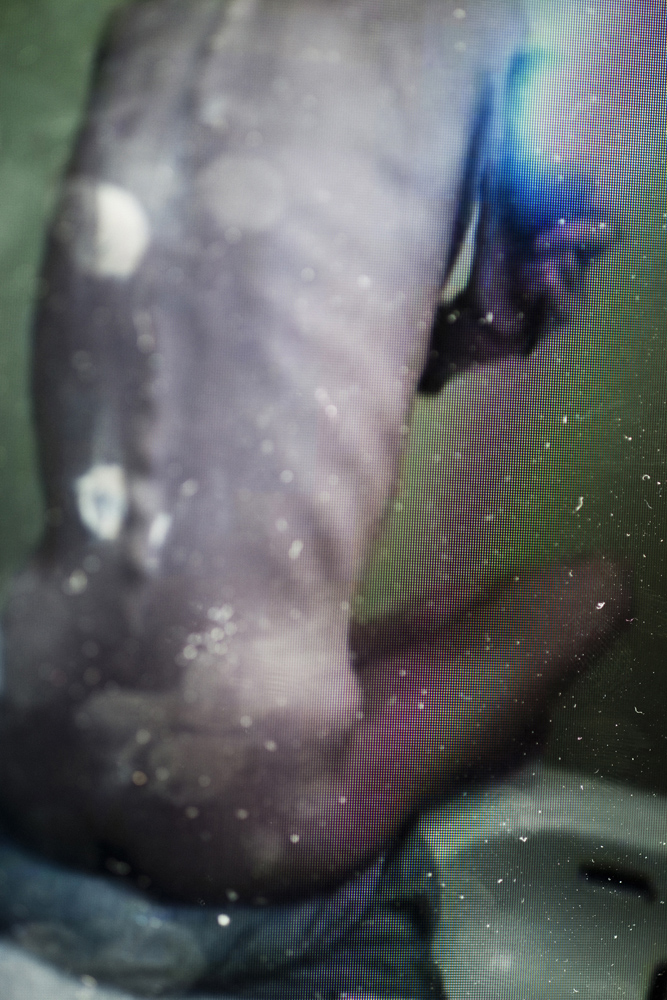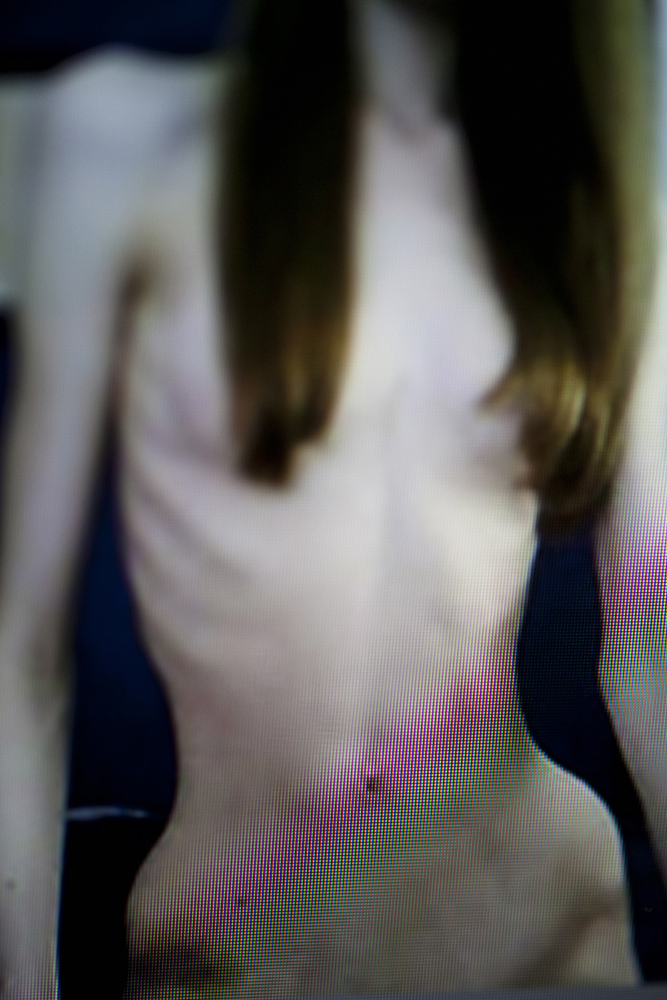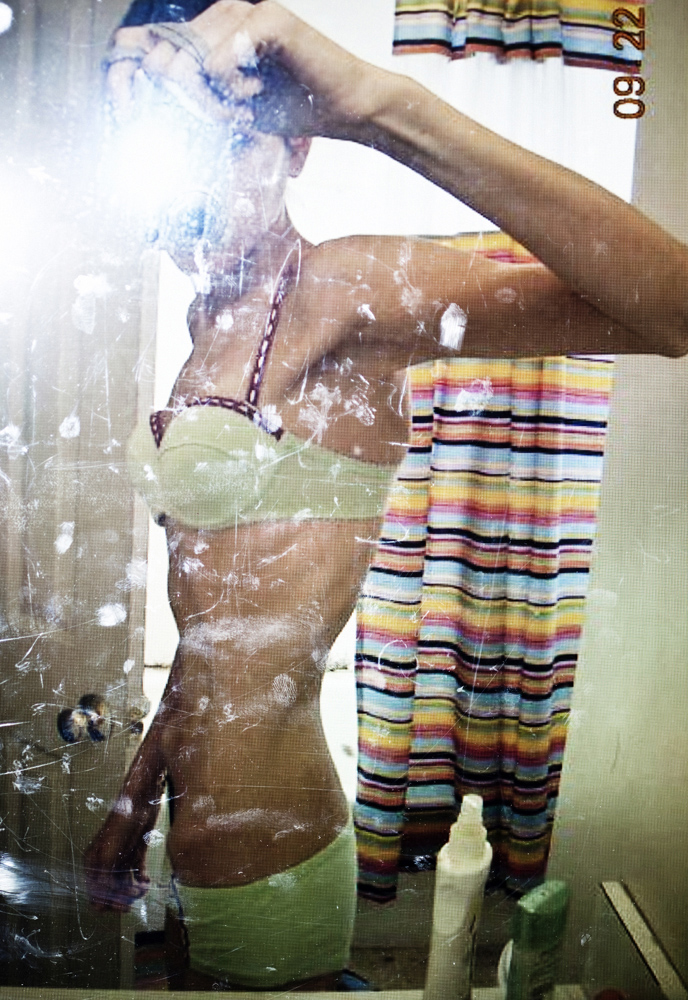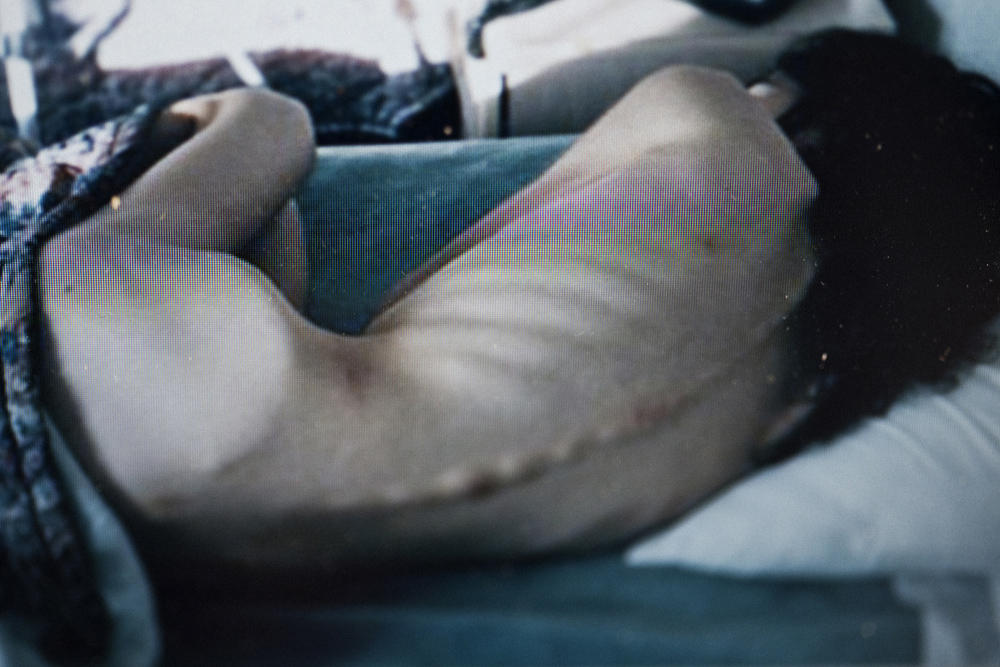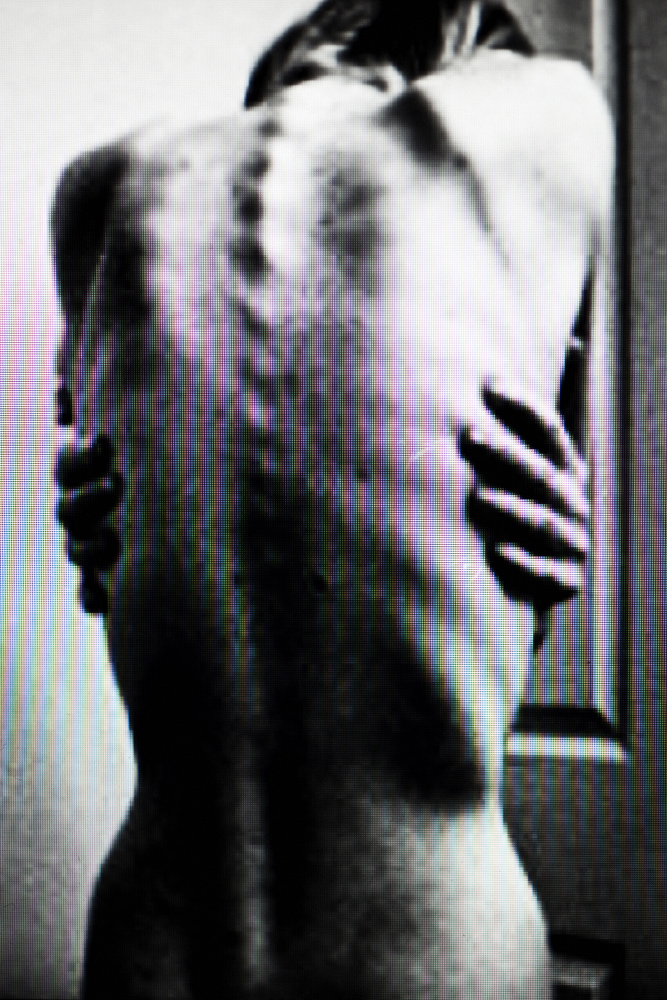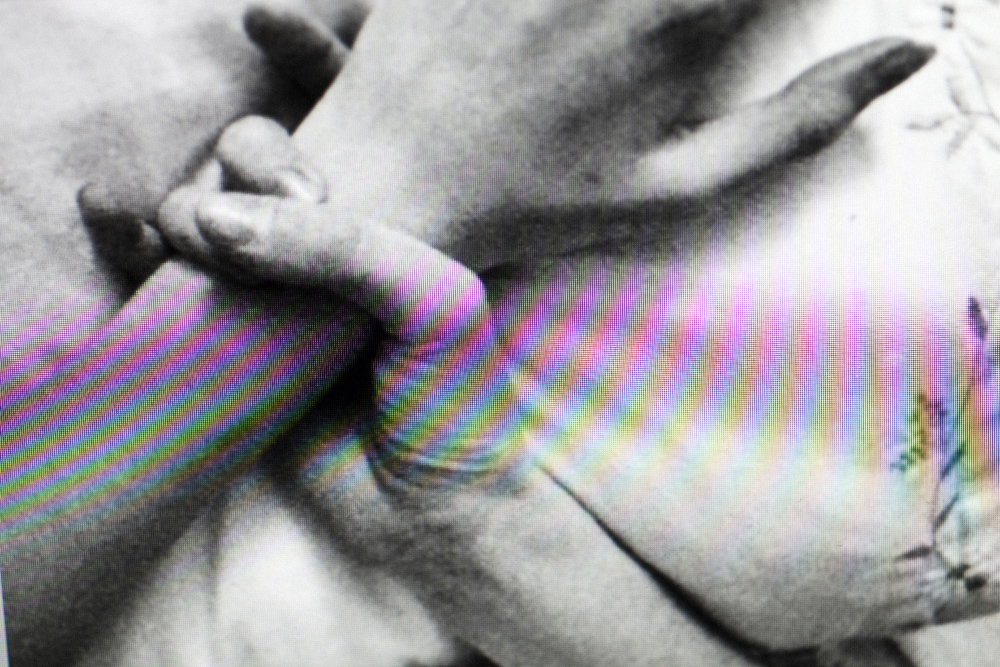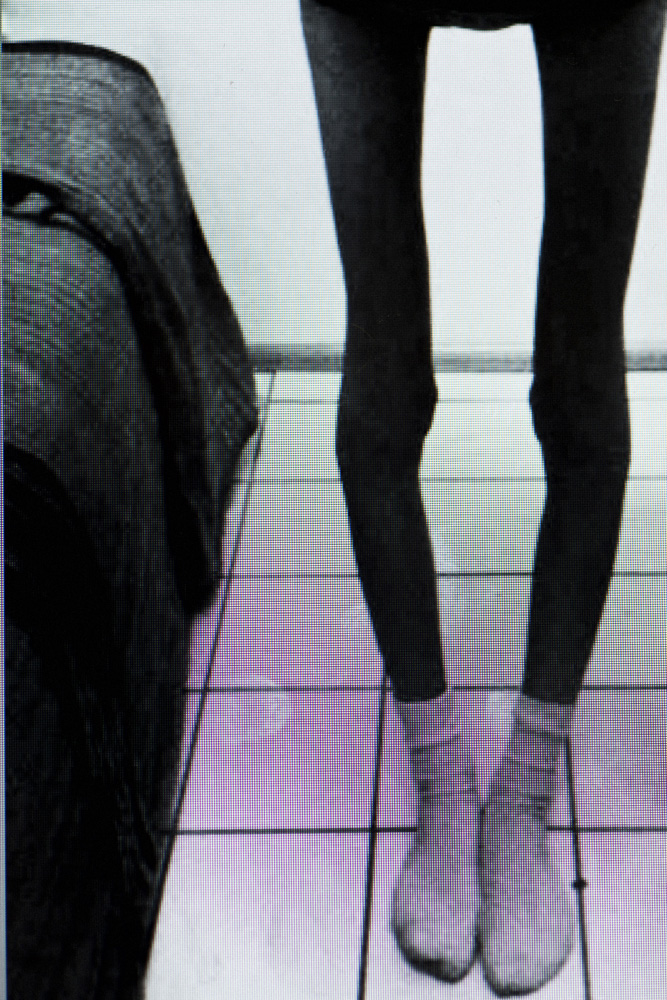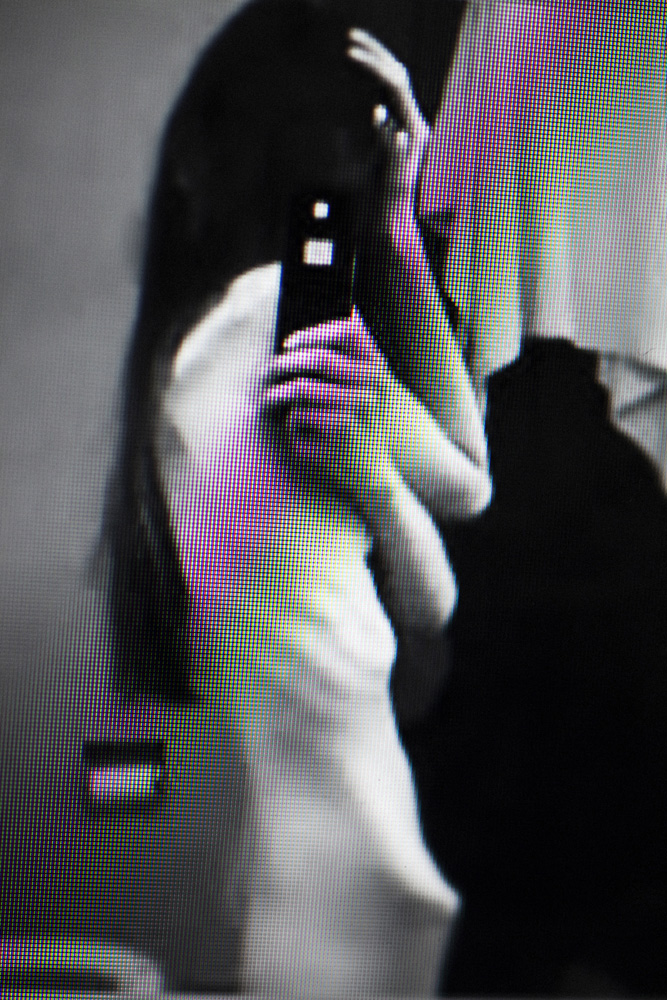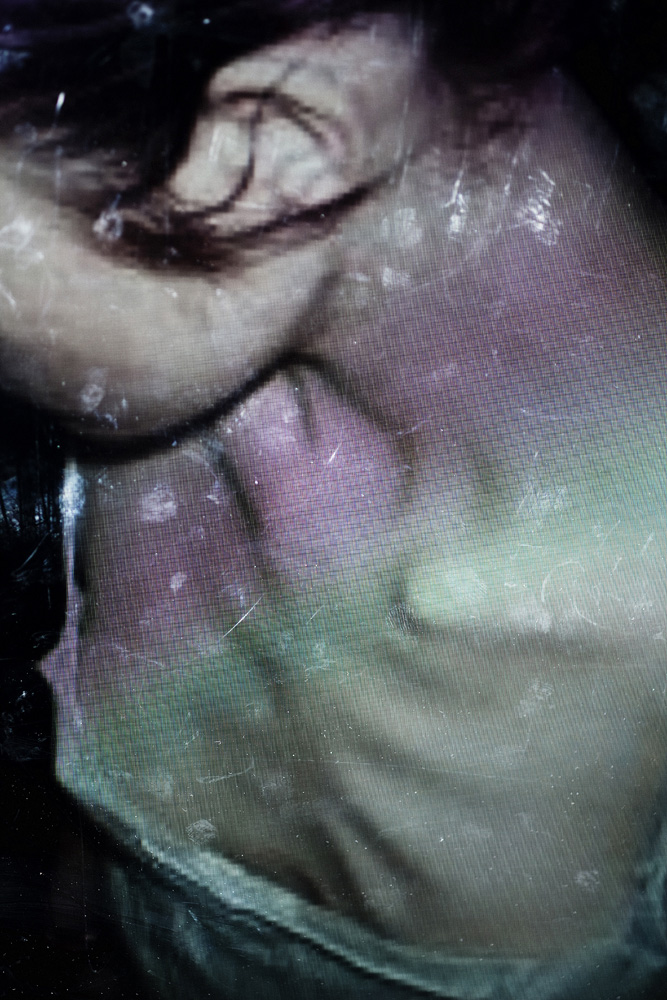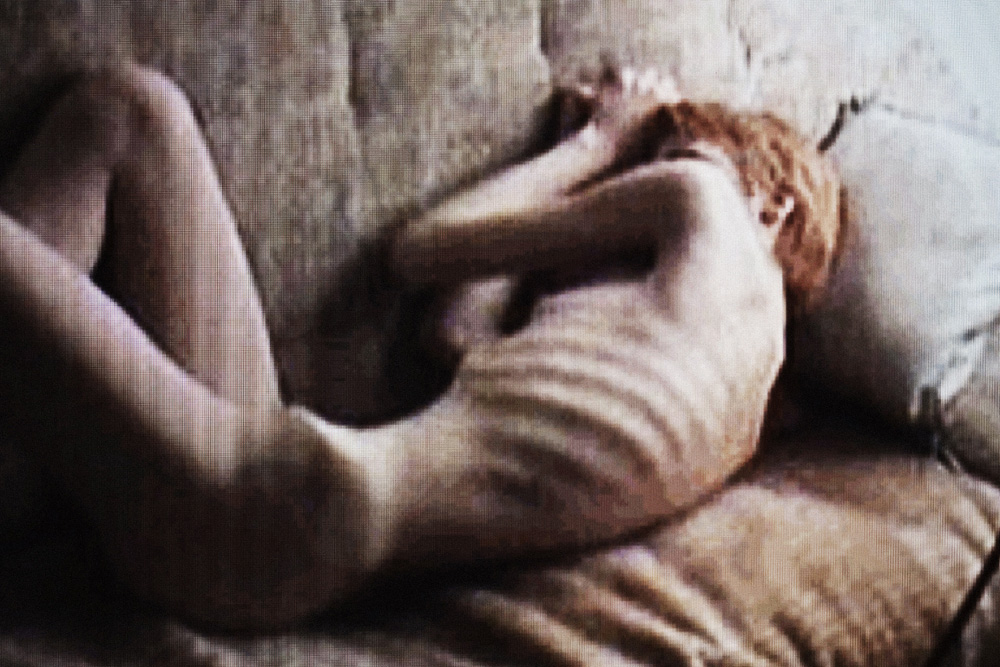Juror's Choice: Laia Abril
Artist Statement: THINSPIRATION
THINSPIRATION denounces Eating Disorder's new risks factors: social networks and photography
in the Pro-Ana community; who have turned anorexia into their dogma and have created a new
visual language.
The Pro-Ana community has turned anorexia (Ana) into its dogma. This illness has even been embodied by the members of this group; they venerate it as the one giving meaning to their totalitarian 'life style'. It’s a virtual reality where they state their commandments, share motivating tricks and exchange hundreds of images of thin models via their blogs. They have created THINSPIRATION a new visual language - obsessively consumed to keep on wrestling with the scales day after day.
Looking at their delusions in greater detail, I find out a new symptom in their behavior. Interacting with their own cameras in a competition in which they portray their achievements in the form of bony clavicles or flat bellies, the Pro-Ana have made the THINSPIRATION evolve. This is where my first worries arise: Does photography help them to be aware of reality or has the camera turned into another trick for anorexia to control their body and perpetuate the distortion of their own image? To what extent does photography influence the deterioration of their illness?
My knowledge of this community comes firsthand. In 2010 after leading a year in recovery to overcome ten years of bulimia, I decided to document the struggle in girls battling the same disease. In this second stage, the project become an introspective journey across the nature of obsessive desire and the limits of self-destruction, denouncing disease’s new risk factors: social networks and photography.
I decide to look for the answer by re-photographing their self-portraits with the intention of establishing a conversation between their camera and mine. I shut myself up in a dark room as if it were a model session, placing my tripod in front of the computer in such a way that when you look through the lens, it’s only them and me. I photograph them in their rooms, in their bathrooms. They pose provocatively, narcissistically. I go over their bodies in detail.
Interfering in their interactive conversations once more, I decide to expose myself to new images that the Pro-Ana consume in a wicked game between admiration and repulsion: the so-called Pro-Bones, where the protagonists are anorexic and are at an extreme stage of the illness. The images that I take from then on disassociate themselves from the character to turn into abstract body landscapes at the gates of the abyss. They are the visual response to the bond between the desired perfection and the disappearance of one’s own identity.
All my aim in this long-term project on Eating Disorders began as a reflexion on the lateral aspects of treating disease and approaching the stories that nobody wants to see. In this second chapter, the Pro-Ana community is another example of how complex the Eating Disorders can be, and how the media and our society prefers to turn the face and not facing the problems we have home. The Pro-Ana stem from the need to draw attention to the muffled silence of anorexia together with the social networks and digital photography. Having a privilege access to that world made me feel the moral obligation to confront and document this problem in an honest way more appropriate to my experience.
Securing the CENTER Project Development Grant would add a significant backing to both the production and research on a wide Pro-Ana project, being able to document deeper and more intimate their lifestyle; as well as the undeniable positive effects on the visibility of the result once completed.
The Pro-Ana community has turned anorexia (Ana) into its dogma. This illness has even been embodied by the members of this group; they venerate it as the one giving meaning to their totalitarian 'life style'. It’s a virtual reality where they state their commandments, share motivating tricks and exchange hundreds of images of thin models via their blogs. They have created THINSPIRATION a new visual language - obsessively consumed to keep on wrestling with the scales day after day.
Looking at their delusions in greater detail, I find out a new symptom in their behavior. Interacting with their own cameras in a competition in which they portray their achievements in the form of bony clavicles or flat bellies, the Pro-Ana have made the THINSPIRATION evolve. This is where my first worries arise: Does photography help them to be aware of reality or has the camera turned into another trick for anorexia to control their body and perpetuate the distortion of their own image? To what extent does photography influence the deterioration of their illness?
My knowledge of this community comes firsthand. In 2010 after leading a year in recovery to overcome ten years of bulimia, I decided to document the struggle in girls battling the same disease. In this second stage, the project become an introspective journey across the nature of obsessive desire and the limits of self-destruction, denouncing disease’s new risk factors: social networks and photography.
I decide to look for the answer by re-photographing their self-portraits with the intention of establishing a conversation between their camera and mine. I shut myself up in a dark room as if it were a model session, placing my tripod in front of the computer in such a way that when you look through the lens, it’s only them and me. I photograph them in their rooms, in their bathrooms. They pose provocatively, narcissistically. I go over their bodies in detail.
Interfering in their interactive conversations once more, I decide to expose myself to new images that the Pro-Ana consume in a wicked game between admiration and repulsion: the so-called Pro-Bones, where the protagonists are anorexic and are at an extreme stage of the illness. The images that I take from then on disassociate themselves from the character to turn into abstract body landscapes at the gates of the abyss. They are the visual response to the bond between the desired perfection and the disappearance of one’s own identity.
All my aim in this long-term project on Eating Disorders began as a reflexion on the lateral aspects of treating disease and approaching the stories that nobody wants to see. In this second chapter, the Pro-Ana community is another example of how complex the Eating Disorders can be, and how the media and our society prefers to turn the face and not facing the problems we have home. The Pro-Ana stem from the need to draw attention to the muffled silence of anorexia together with the social networks and digital photography. Having a privilege access to that world made me feel the moral obligation to confront and document this problem in an honest way more appropriate to my experience.
Securing the CENTER Project Development Grant would add a significant backing to both the production and research on a wide Pro-Ana project, being able to document deeper and more intimate their lifestyle; as well as the undeniable positive effects on the visibility of the result once completed.

